Healing Foods: What To Eat To Help Your Body Recover From Injury Or Illness
1 Ginger
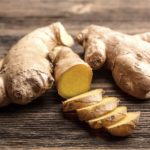
I’m sure you’ve heard that ginger ale should be given to pregnant women experiencing nausea. This isn’t just some old wives’ tale, though. Gingerols, compounds found in ginger, really do help ease nausea (and vomiting, too). As such, ginger can be used to treat morning sickness, motion sickness, and post-surgery or chemotherapy-related stomach issues.
According to Michigan Medicine, formerly known as the University of Michigan Health System, there are several ways you can use ginger to alleviate nausea and vomiting. These include:
- Taking ginger capsules several times a day
- Drinking ginger tea (grated fresh ginger in hot water)
- Consuming ginger in a sugar syrup base (available at health food stores)
- Eating crystallized ginger
2 Sardines
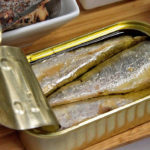
Who knew that these tiny fish packed in a tin can were actually good for you? According to an article reviewed by registered dietitian Christine Mikstas, RD, LD, sardines can help your broken bones heal faster. That’s because they are loaded with calcium, vitamin D, and omega-3 fatty acids—all of which help strengthen your bones.
FUN FACTS
- Sardines have more omega-3 fatty acids than most other fish.
- Sardines contain far fewer levels of mercury than other types of seafood because these fish are caught wild and young.
- Back in 2016, Craig Cooper, co-founder of telecommunications company Boost Mobile, told CNBC that he eats five cans of sardines every day to maintain his health and energy.
3 Unripe Bananas
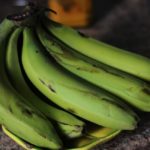
I was always told not to eat unripe bananas. Had my parents known they were actually healthy, we would have eaten them while they were still green. Here’s why:
Unripe bananas contain resistant starch. This starch feeds the good bacteria in your digestive tract while removing the bad bacteria. As a result, unripe bananas are good for a number of gut issues, including diarrhea.
Studies published by the National Institutes of Health also show a positive correlation between consumption of green bananas and glycemic/insulin metabolism, weight control, and renal and liver complications associated with diabetes.
Additionally, bananas are loaded with potassium, an electrolyte necessary for maintaining your body’s fluid and blood volume so it can function normally.
4 Honey
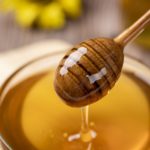
The antioxidants, vitamins, minerals, and enzymes found in honey have many health benefits. For one thing, honey has long been used to treat a number of ailments, including coughs, hiccups, throat infections, thirst, constipation, dizziness, fatigue, eye diseases, bronchial asthma, tuberculosis, hepatitis, constipation, worm infestation, piles, eczema, wounds, and ulcers.
What’s more is that a study published by the National Institutes of Health says that there’s evidence to suggest that honey is useful in treating diabetes mellitus and cancer as well! The study also says that honey helps to reduce anxiety and depression, can be used to prevent or reduce convulsions, and inhibits the sensation of pain.
WARNING
The CDC warns against giving honey to children younger than 12 months. That’s because honey can contain the bacteria that causes infant botulism, which is an intestinal toxemia.
5 Healthy Fats
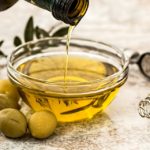
Omega-3 fatty acids are healthy fats that contain anti-inflammatory properties. This means they can help regulate the pain associated with inflammation. Thankfully, there are plenty of foods containing these fatty acids. They include olive oil, salmon, tuna, nuts, flaxseed, and soy.
In addition to their anti-inflammatory properties, healthy fats can also cut your risk of suffering from a heart attack or stroke, lower your bad cholesterol levels, lower your triglyceride levels, and lower your blood pressure.
FACTS ABOUT OMEGA-3 FATTY ACIDS
- Omega-3 fatty acids are essential fats.
- The body cannot make omega-3 fatty acids on its own.
- Fish are the best food source of omega-3 fatty acids.
6 Green Tea
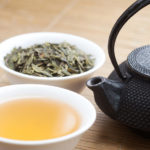
Green tea is loaded with antioxidants, which help prevent, delay or repair some types of cell and tissue damage.
Here are some more benefits drinking green tea has to offer:
- Cancer prevention
- Fighting heart disease
- Lower blood pressure
- Anti-inflammatory treatment
- Weight loss
- Lower cholesterol
According to an article published by Cleveland Clinic, the healing power of green tea is linked to one antioxidant compound in particular: catechins. EGCG, or Epigallocatechin gallate, is the major catechin found in green tea, accounting for 50% to 80%. According to several studies, catechins can regulate gene and protein expression in neurons, as well as counterbalance neurodegenerative events associated with aging and related diseases.
7 Water

Water is, without a doubt, one of the healthiest things you can consume. Not only that, but you literally can’t live without it. That’s because water has many important jobs, including:
- Carrying nutrients and oxygen to your entire body
- Removing toxins from your body
- Aiding digestion
- Preventing constipation
- Normalizing blood pressure
- Stabilizing the heartbeat
- Cushioning joints
- Protecting organs and tissues
- Regulating body temperature
- Maintaining electrolyte balance
You can see why it’s important to drink enough water, but just how much qualifies as enough? According to Harvard Medical School, you should drink four to six cups daily—if you’re healthy, that is.
People with certain health conditions should limit the amount of water they drink because they can end up taking in too much water. This includes people with thyroid disease or kidney, liver and heart problems. Additionally, people taking medications that cause them to retain water should also be careful how much water they drink.
8 Fermented Foods

Kimchi, sauerkraut, and other fermented foods contain good bacteria known as probiotics. Probiotics help to relieve all sorts of gut issues, including gas, bloating, constipation, and diarrhea. Not only do they fill your gut with good bacteria, but they work to move out the bad bacteria as well.
TIP
According to Women’s Health magazine, registered dietitian Karen Ansel says that you should pair your probiotics with prebiotics in order to get the biggest benefit from them. Here’s why:
Probiotics contain live microorganisms that maintain or improve the good bacteria in your gut. Prebiotics, which include foods such as dry beans and whole grains, work to improve the balance of these microorganisms.
9 Kale
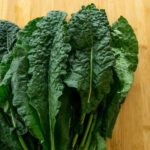
A plant-based diet can heal your body in a number of ways. Kale, like other dark, leafy greens, contains vitamin K, a nutrient that helps your blood group up and clot. It also stops you from losing more blood. Additionally, vitamin K protects your scrapes, knife cuts, and other wounds, as well as helping your body build healthy bone tissue.
What’s more is that foods like kale work to reduce inflammation in the body. As a result, it can help to prevent cancer, heart disease and rheumatoid arthritis, and, in some cases, reverse or suspend these diseases altogether.
10 Horseradish
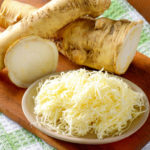
If you’ve ever eaten horseradish in any form (e.g. whole, sauces, etc.), you already know how spicy it is. It’s this spiciness that provides certain health benefits. For example, “horseradish moves out mucus that attracts bacteria if it stays in your system too long,” notes Christine Mikstas, RD, LD. In other words, horseradish works wonders for your sinus and nasal conditions.
Additionally, some people take horseradish by mouth to treat urinary tract infections, kidney stones, fluid retention, respiratory infections, coughs, rheumatism, gallbladder disorders, sciatic nerve pain, gout, colic, and intestinal worms in children. Others will apply it directly to the skin to treat painful, swollen joints and tissues, as well as minor muscle aches.
11 Coffee

Did you know that coffee, or more specifically caffeine, can ease headaches? Yep, it’s true. According to an article published by WebMD, when the blood vessels that feed your brain get tight and enlarge, they press against your nerves, and this is what causes your head to ache. The caffeine in coffee causes those blood vessels to go back down in size, thereby eliminating your headache.
WARNING
Don’t use this information as an excuse to drink too much coffee. If you develop a dependence on caffeine, abruptly cutting back on it can cause what’s known as withdrawal headache. Other symptoms that will accompany this headache include tiredness, irritability, nausea, muscle pain, and difficulty concentrating.
12 Garlic
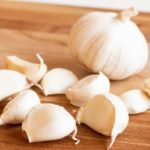
Garlic is a natural antibiotic. As such, it “has long been used medicinally, most recently for its cardiovascular, antineoplastic, and antimicrobial properties,” the National Institutes of Health wrote on its website. Garlic is especially helpful when recovering from surgery or bacterial infections.
Be warned, though. Taking high doses of garlic prior to undergoing surgery can be deadly. That’s because garlic can prolong bleeding time due to its blood-thinning properties. As such, patients should stop taking it seven to 10 days before the surgery is scheduled to take place. Additionally, people taking blood-thinning medicines like warfarin and aspirin should avoid consuming large quantities of garlic.
13 Lemon Juice

Lemons are considered a great source of vitamin C, so you already know they play a role in enhancing your immune system. But here’s what you probably didn’t know about lemon juice: it has protective effects on alcohol-induced liver injury.
These findings came from a study conducted on mice. According to the study, “the protective effects might be related to the antioxidant capacity of lemon juice.” These antioxidants include hesperidin, eriocitrin, naringin, neohesperidin, rutin quercetin, chlorogenic acid, luteolin, and kaempferol.
Furthermore, the study also showed that lemon juice has other health benefits as well, including an anticancer effect, antimicrobial effect, lipid-lowering effect, and protective effect against cardiovascular diseases.
14 Cloves
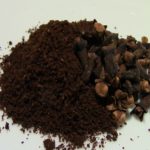
If you have a toothache and need a quick fix, don’t reach for the Anbesol or Orajel. Reach for cloves instead. Whole cloves or clove oil can be used as a home remedy when you need temporary relief from tooth pain. That’s because eugenol, an active ingredient in cloves, numbs the nerves in your mouth.
And according to a study conducted by the British Association of Oral and Maxillofacial Surgeons, eugenol is much more effective than using another analgesic and doing nothing else.
For relief using a whole clove, place the clove on the affected area and leave it there until the pain subsides. For relief using clove oil, grab a cotton ball or cotton swab, add a few drops of clove oil to it, and gently wipe the oil over your gums at the point of pain.
15 Apples
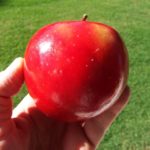
I am sure you have heard the saying, “an apple a day keeps the doctor away.” And there is a good reason why you have heard it said before: because it’s true! According to an article published by Prevention magazine, eating an apple every day helps protect you from heart disease. Here’s how:
The fiber found in apples sweeps out cholesterol, while the polyphenols found in the fruit shield the remaining cholesterol from free-radicals. As a result, eating an apple a day results in a 40% decrease in bad, or LDL, cholesterol.
FUN FACT
Apples are also good for asthma, digestion, and weight loss.
16 Egg Yolks

You’ve likely heard plenty of times that orange and yellow fruits and vegetables, particularly carrots, are good for your eyesight, and that’s true. But there’s another yellow food that’s also good for your vision. That food is egg yolks.
Like orange and yellow fruits and vegetables, egg yolks also contain lutein and zeaxanthin. In fact, egg yolks are a richer source of these nutrients than fruits and vegetables.
According to the American Optometric Association, these two nutrients reduce the risk of chronic eye diseases. For example, people who consume the most lutein and zeaxanthin have a much lower risk of developing new cataracts.
17 Hemp Seeds
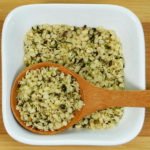
While hemp and marijuana are indeed in the same family, hemp seeds don’t naturally contain tetrahydrocannabinol (THC), the main psychoactive ingredient in cannabis. Now that we’ve gotten that out of the way, let me explain how hemp seeds can help you.
Like its psychoactive cousin, hemp offers many health benefits. For one thing, it can help you fight type 2 diabetes. According to The Journal of the Federation of American Societies for Experimental Biology, hemp protein has the potential to positively impact your blood sugar levels after a meal. What’s more is that hemp seeds are also good for heart health, vision, and fighting fatigue.
18 Tart Cherry Juice
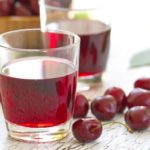
Did you know that you can use tart cherry juice to combat insomnia? Okay, so insomnia isn’t technically an illness, but it can be a symptom of an illness. Either way, it’s something that people who suffer from it desperately want relief from. Thankfully, all they have to do is drink just one ounce of tart cherry juice twice a day. At least that’s what helped insomniac patients who participated in a 2012 study that was published in the European Journal of Nutrition.
So, what exactly is in cherry juice that helps you get some shut-eye? Melatonin. According to a study published by the National Institutes of Health, “melatonin is a hormone that your brain produces in response to darkness. It helps with the timing of your circadian rhythms (24-hour internal clock) and with sleep.”
19 Chili Powder
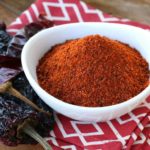
According to a study published by the National Institutes of Health, capsinoids—non-pungent compounds found in a few varieties of peppers—could play a beneficial role in weight management. That’s because capsinoids have been shown to increase energy expenditure, increase fat oxidation, and reduce appetite.
In a 2009 study, a group of volunteer participants took six grams of capsinoid oil a day. They lost five times as much fat as the group who didn’t receive capsinoid oil.
FUN FACTS
- Capsinoids are closely related to capsaicinoids, the compounds that give hot peppers their spiciness. Capsinoids, however, contain no heat. In fact, they are about 1,000 times less pungent than capsaicinoids.
- Capsinoids also have antioxidant, anti-inflammatory, pain-relieving, and anticancer properties.
20 Dark Chocolate

Can chocolate really be good for you? Yes, it can. But I must stress that it’s DARK chocolate only. I know you’re disappointed that you can’t scoff down a bunch of M&Ms or Hershey’s Kisses, but dark chocolate can still be tasty. More importantly, it can heal your body in a number of ways.
According to the Harvard T.H. Chan School of Public Health, the cocoa solids found in dark chocolate contain plant chemicals called flavanols that may help to protect your heart. Dark chocolate contains up to 2-3 times more flavanol-rich cocoa solids than milk chocolate. Additionally, flavanols have been shown to improve blood flow (thereby lowering blood pressure) and increase insulin sensitivity, which could reduce the risk of diabetes in the long run.
